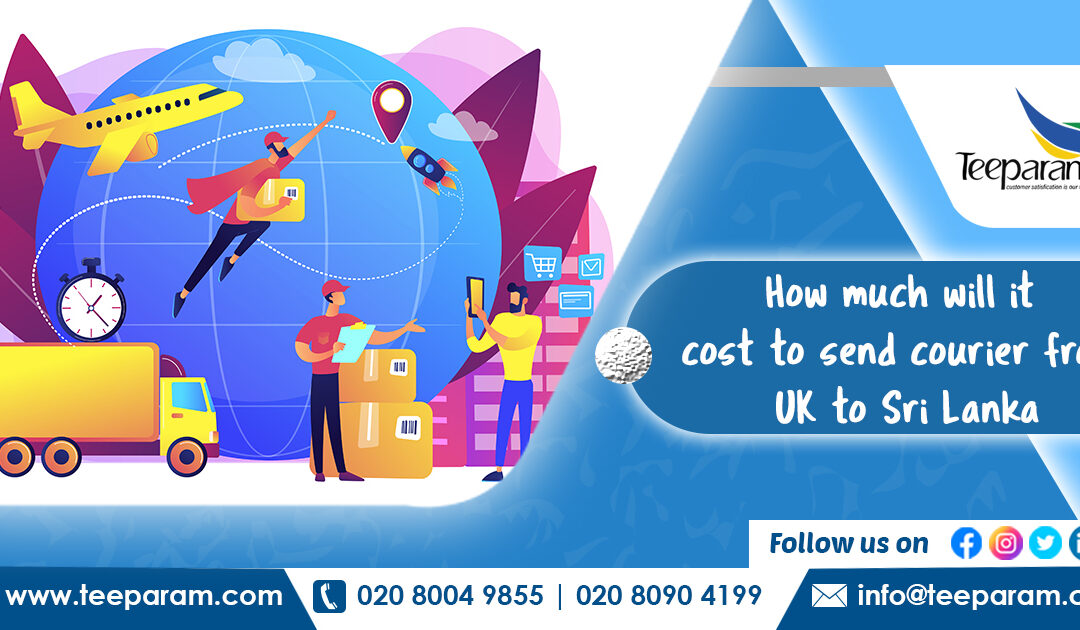
How Much Will It Cost To Send Courier From UK To Sri Lanka
The cost to send parcels to Sri Lanka from UK depends on numerous factors like the location from which the parcel has been sent, the size and weight of the parcel, the items present inside the parcel, and the mode of cargo in which the parcel has been delivered, etc, There are numerous other factors that also decides the cost of sending parcels from UK to Sri Lanka. Let’s explore the factors and other valuable insights to send parcels from UK to Sri Lanka more efficiently.
Top factors that decide the cost of sending parcels to Sri Lanka from UK:
Geographical location:
Today’s parcel services have grown far enough to reach every nook and corner of the globe. The cost of sending a parcel increases as the distance grows from where the parcel has been sent. The cost of sending parcels to Sri Lanka from the UK varies according to geographical location and also depends on customs duties. The charges imposed by the customs may also vary according to the geographical locations and the regulations followed by the customs department. The goods that have to be sent from some particular geographical locations like private islands may cost you more compared to the standard charges due to the lack of logistics and cargo services. custom duties in such nations will also decide your delivery charges. The geographical location is like a whole that binds multiple things like connectivity, transportation, and logistics facilities within it which decide the cost of sending parcels to Sri Lanka . Some examples of countries from which it may be more expensive to send a package to Sri Lanka from the UK include those in South America, Africa, and Asia, as well as some countries in the Middle East and Oceania. There are certain reasons that strongly impact the delivery cost of sending goods from these countries to the UK
The reasons may be the distance from the UK, and packages must travel a long way to reach their destination. This can increase the cost of shipping due to the distance the package must be transported. Additionally, the cost of shipping to the Sri Lanka may be higher because the shipping infrastructure and logistics networks in some parts of these countries may not be as developed as those in other countries, which can make it more expensive to transport packages.
Size and weight of the package:
The size and weight of a package are important factors in determining shipping costs because they determine how much space the package will take up on a truck, plane, or ship, and how much it will weigh. In general, larger and heavier packages will cost more to ship than smaller and lighter packages.
Shipping method:
The shipping method you choose can also affect the cost of sending a package to Sri Lanka. Different shipping methods have different costs, and some may be more expensive than others depending on the size and weight of the package, the distance it needs to travel, and other factors. For example, shipping a package by air may be more expensive than shipping it by ground, but it will also be faster.
Distance:
As mentioned earlier, the distance a package needs to travel can also affect the cost of shipping. Packages that need to be shipped a long distance will generally be more expensive to send than packages that are being shipped a shorter distance
Fuel costs
Fuel costs can also impact the cost of shipping a package to Sri Lanka. If fuel prices are high, it can increase the cost of shipping a package because carriers will need to pay more to transport the package.
Insurance:
If you choose to insure your package, this can also add to the cost of shipping which increases the cost of sending parcels to Sri Lanka. Insurance can protect your package in the event that it is lost, damaged, or stolen during shipping, but it can also add to the overall cost of shipping.
Customs fees:
If you are sending a package from the UK, you may need to pay customs fees when the package arrives in the Sri Lanka. These fees can vary depending on the value of the items being shipped, and they can add to the overall cost of shipping a package to the UK.
Delivery service providers:
Delivery service providers are also one of the important factors that decide the cost of delivering parcels from UK to Sri Lanka. The delivery charges may vary according to the service providers based on their carriers, transportation ability, cargo facilities, and service proficiency. Parcel delivery service providers will charge for the distance between the locations, the size of the package, and the contents in It. Each factor is correlated in deciding the delivery charges of your package.
Teeparam is one of the well-known parcel delivery services in the market which is recognized for its efficiency, security, and proficiency in their services. Teeparam supports you in send Courier from the UK to Sri Lanka more efficiently compared to the other parcel delivery services in the market. Teeparam’s wide range of logistics choices and its choice of elite carriers ensure the security of your parcel and delivery of your parcel on time. Teeparam’s efficiency in delivering your parcel will never compromise the quality and standards of its services. This service proficiency and the level of standards assures every customer that their parcels will be taken good care of and will be delivered on time. Explore and experience the efficiency and convenience offered by Teeparam in sending parcels from UK to Sri Lanka.


